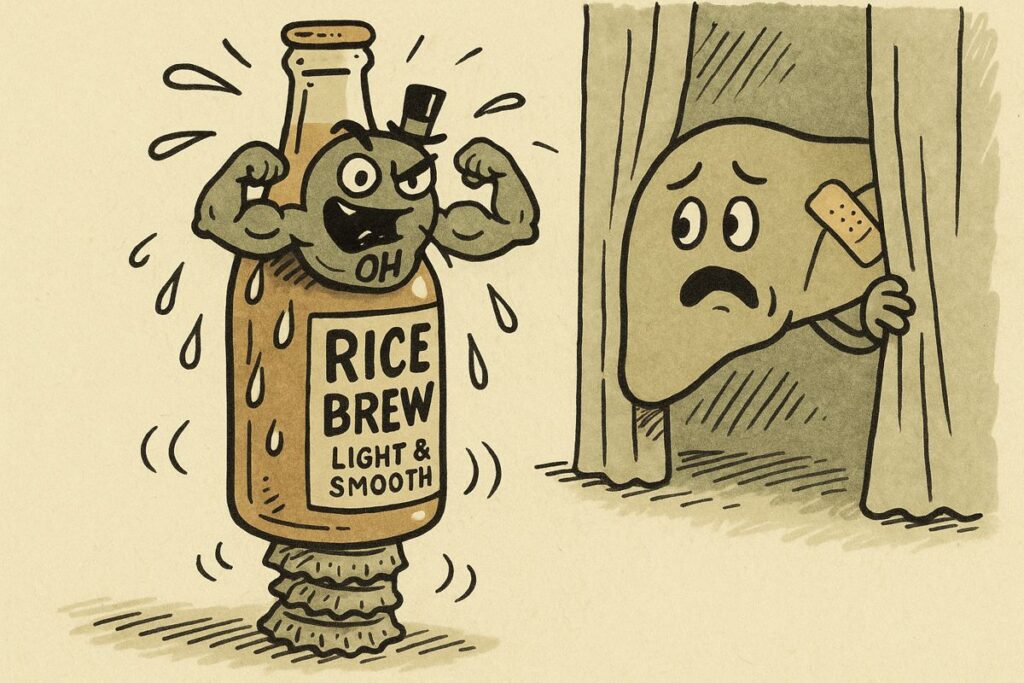Introduction
Recent research has brought new attention to the practice of using rice as an adjunct grain in beer brewing. While rice is known for imparting a creamier mouthfeel and lighter flavor to beer, scientists have uncovered a paradox: rice-heavy beers, despite having lower overall alcohol by volume (ABV), may contain higher concentrations of potentially harmful compounds. These findings challenge common perceptions about “lighter” beers and prompt deeper questions about the health implications of alcoholic beverages.
Rice in Brewing: Tradition and Innovation
Rice is widely used in both Asian and American brewing traditions, favored for producing crisp, smooth lagers. As climate resilience and supply chain stability become more important, rice is also being explored as an alternative to barley, especially in regions where barley is less available or more expensive. Brewers have found that substituting a significant portion of the barley malt with rice can yield beers with a unique, creamy mouthfeel and paler color, hallmarks of popular beer styles in Japan and the United States.
The Science of Mouthfeel and Flavor
The addition of rice in the brewing process alters the chemical profile of the resulting beer. Notably, higher rice content leads to increased production of higher alcohols—organic compounds with more carbon atoms than ethanol. These higher alcohols are responsible for the creamy flavors and fuller mouthfeel that many consumers enjoy. However, they are also more toxic to the human body than ethanol, the primary alcohol found in beer.
Despite their appeal in taste and texture, these higher alcohols are processed by the liver through different and potentially more harmful metabolic pathways. This means that even beers with lower ABV can pose significant health risks if they contain elevated levels of these compounds. The research thus uncovers a paradox: lighter beers made with rice may not be as benign as they seem.
Health and Safety: A Sobering Perspective
The growing trend to innovate and “improve” alcoholic beverages often overlooks a fundamental truth—alcohol is a toxic substance. All alcohols, including those produced through advanced brewing techniques, are fundamentally poisons. The body has no natural requirement for alcohol; it is an artificial substance that, regardless of its source or the method of its production, carries inherent risks. Scientific research into the nuances of brewing may unintentionally perpetuate the myth that alcohol can be made safer or healthier through innovation, distracting from the reality that its toxic nature remains unchanged.
Understanding the specific risks of rice-heavy beers highlights a broader point: efforts to refine brewing techniques do not address the root issue—the toxicity of alcohol itself. Instead, these advances may simply shift the pattern of harm, introducing new compounds with different physiological effects but retaining the underlying danger.
Rethinking Alcohol Consumption
For health-conscious consumers, these findings underscore the importance of discernment in beverage choices. The absence of a biological need for alcohol means that there is no benefit—only risk—in its consumption, regardless of how it is brewed. The presence of higher alcohols in rice beers illustrates that even beverages perceived as lighter or smoother can carry significant health hazards. This knowledge invites a critical reassessment of the role alcohol plays in our lives and challenges the notion that brewing innovation equates to wellness.
Conclusion
The discovery of elevated higher alcohols in rice-based beers serves as a reminder that alcohol, in any form, remains a substance with considerable health risks. Rather than searching for ways to make an unnecessary poison seem more appealing or less dangerous, it is crucial to recognize alcohol for what it is. True improvement comes not from refining brewing techniques, but from informed choices and a clear understanding of alcohol’s true nature.



